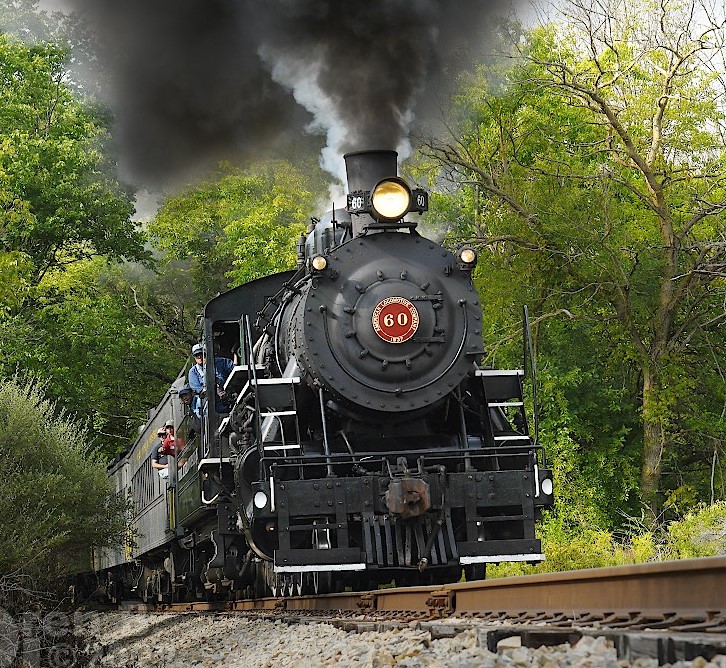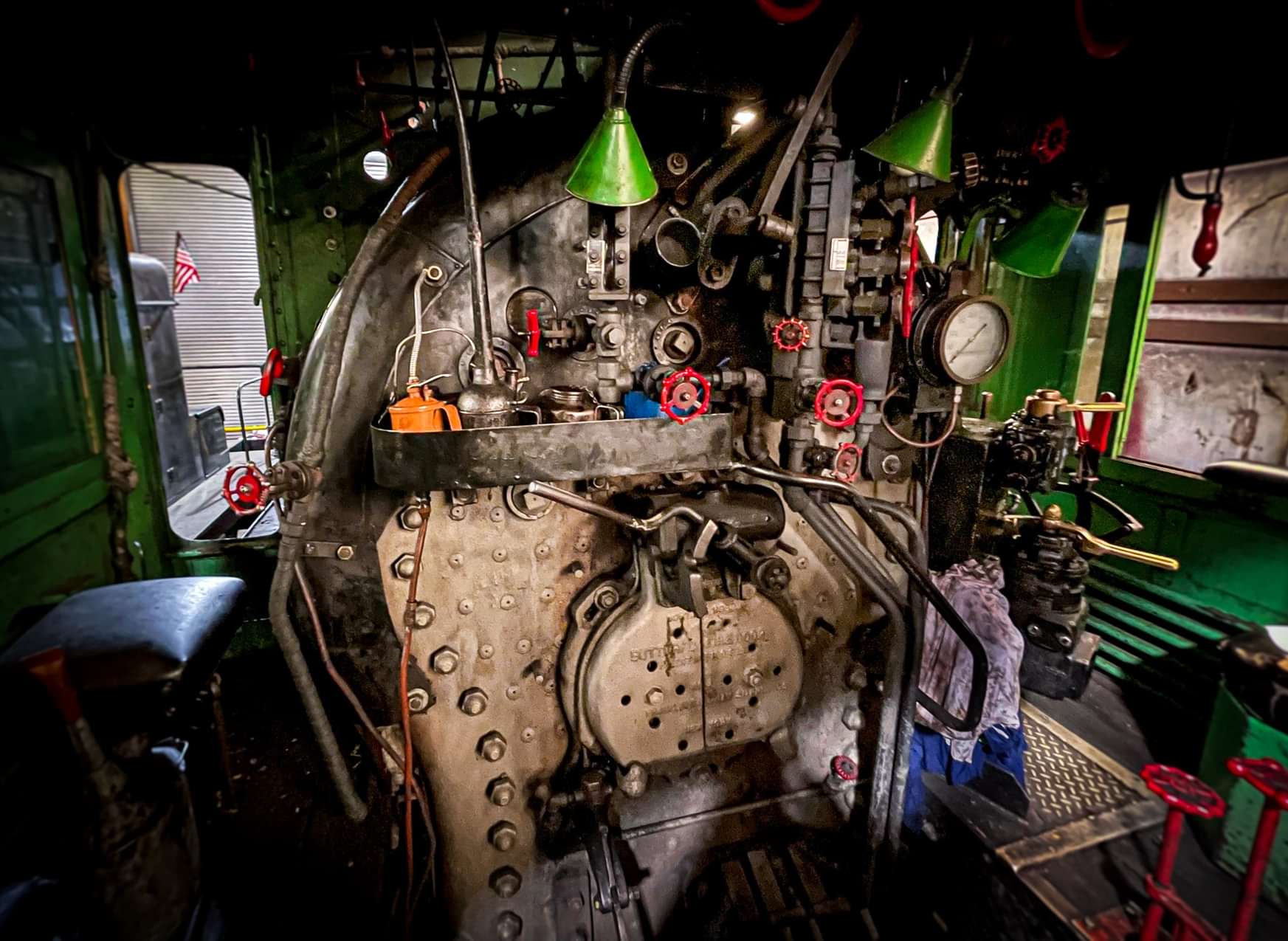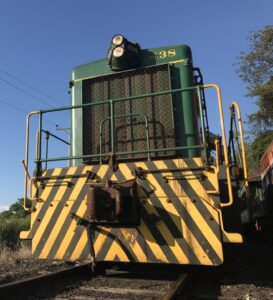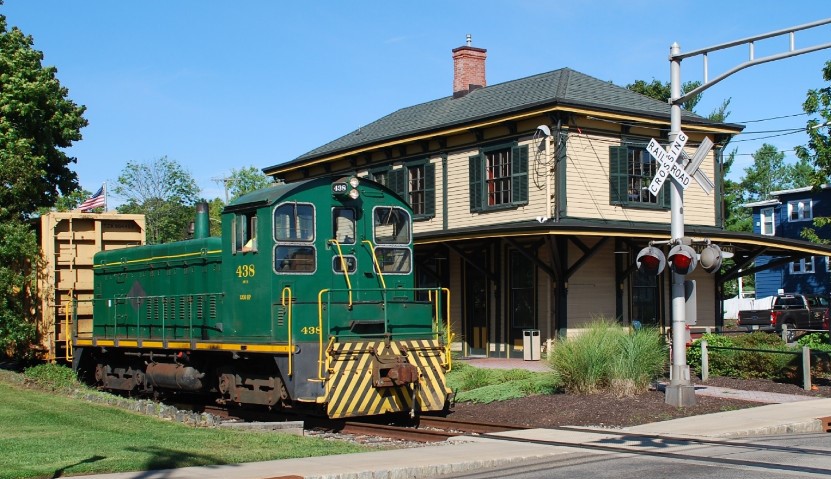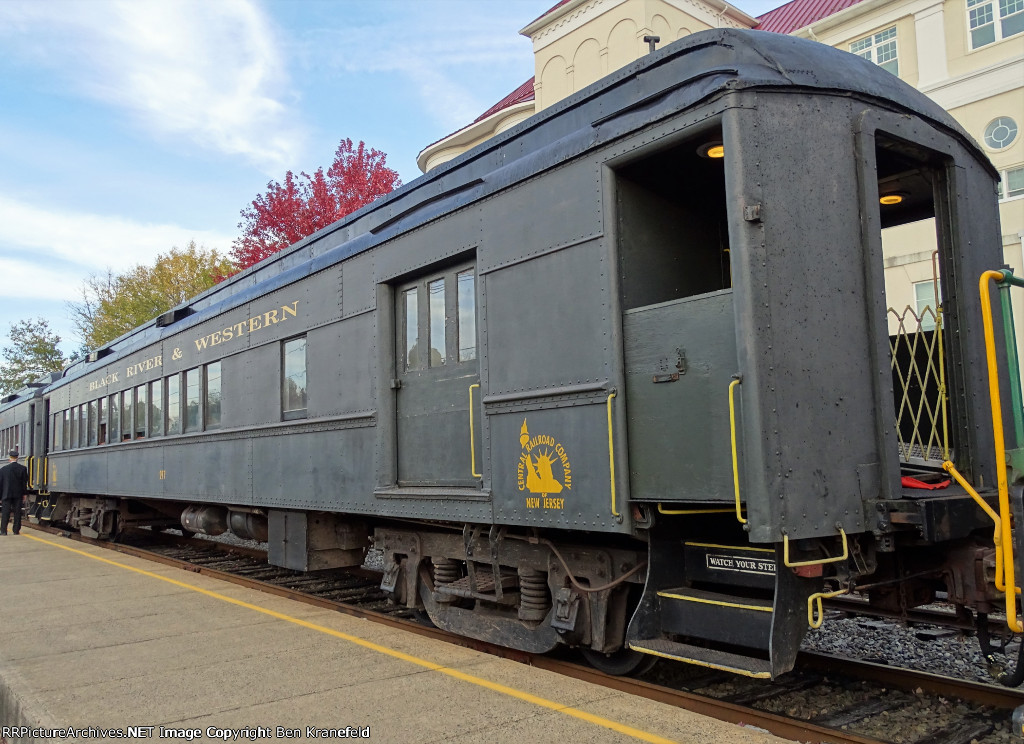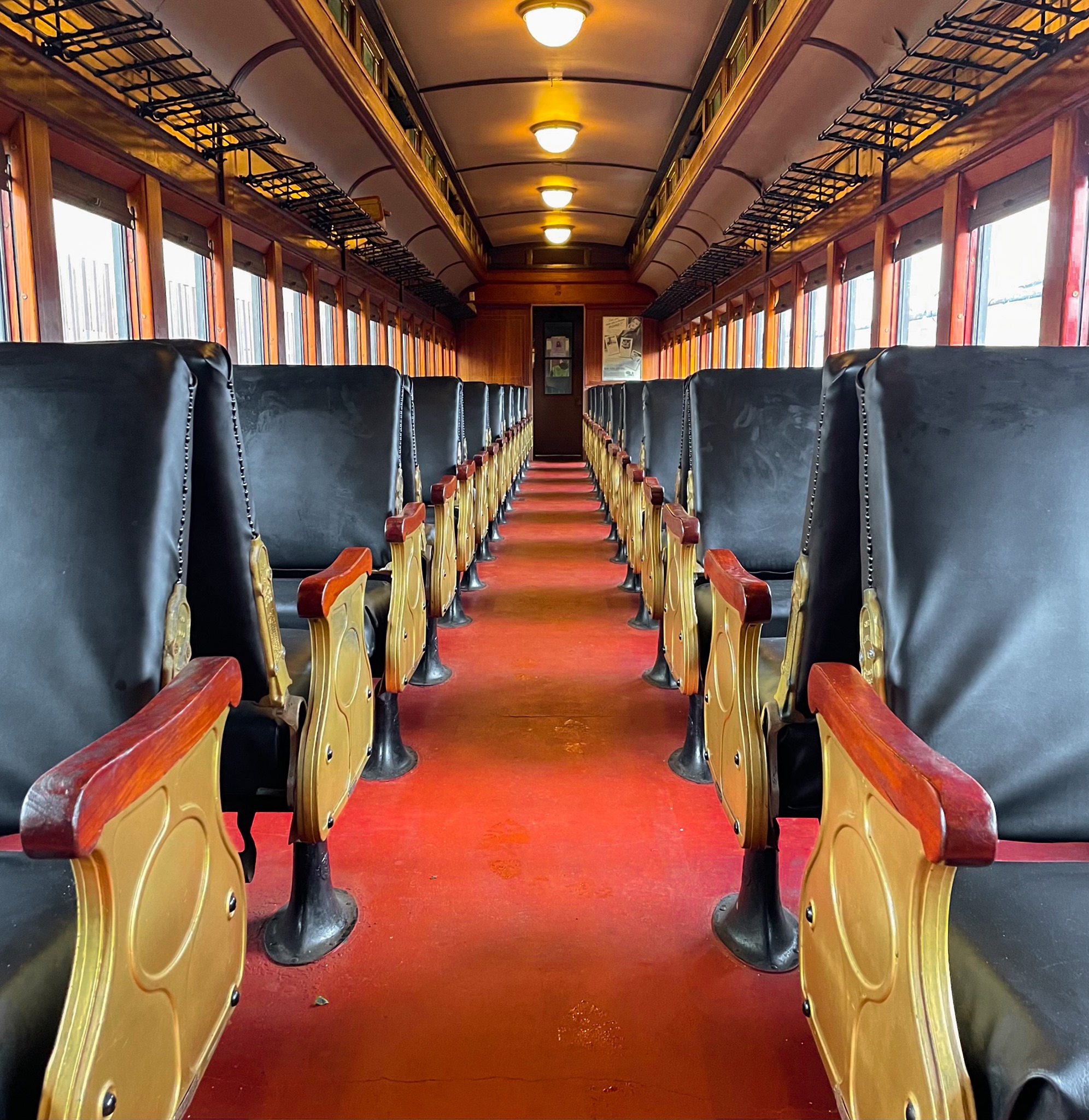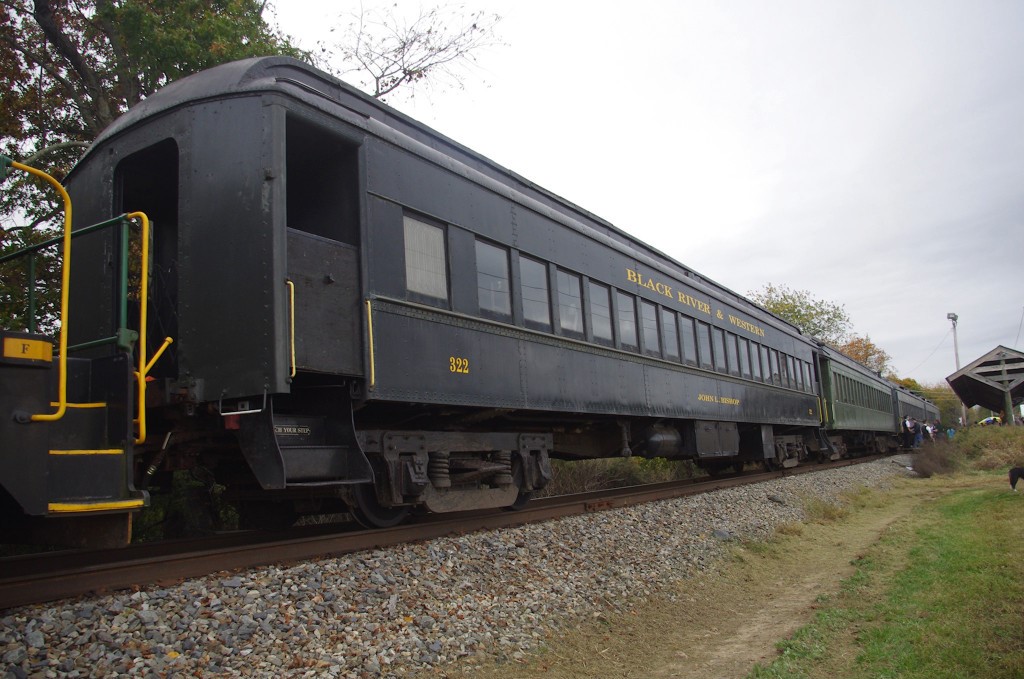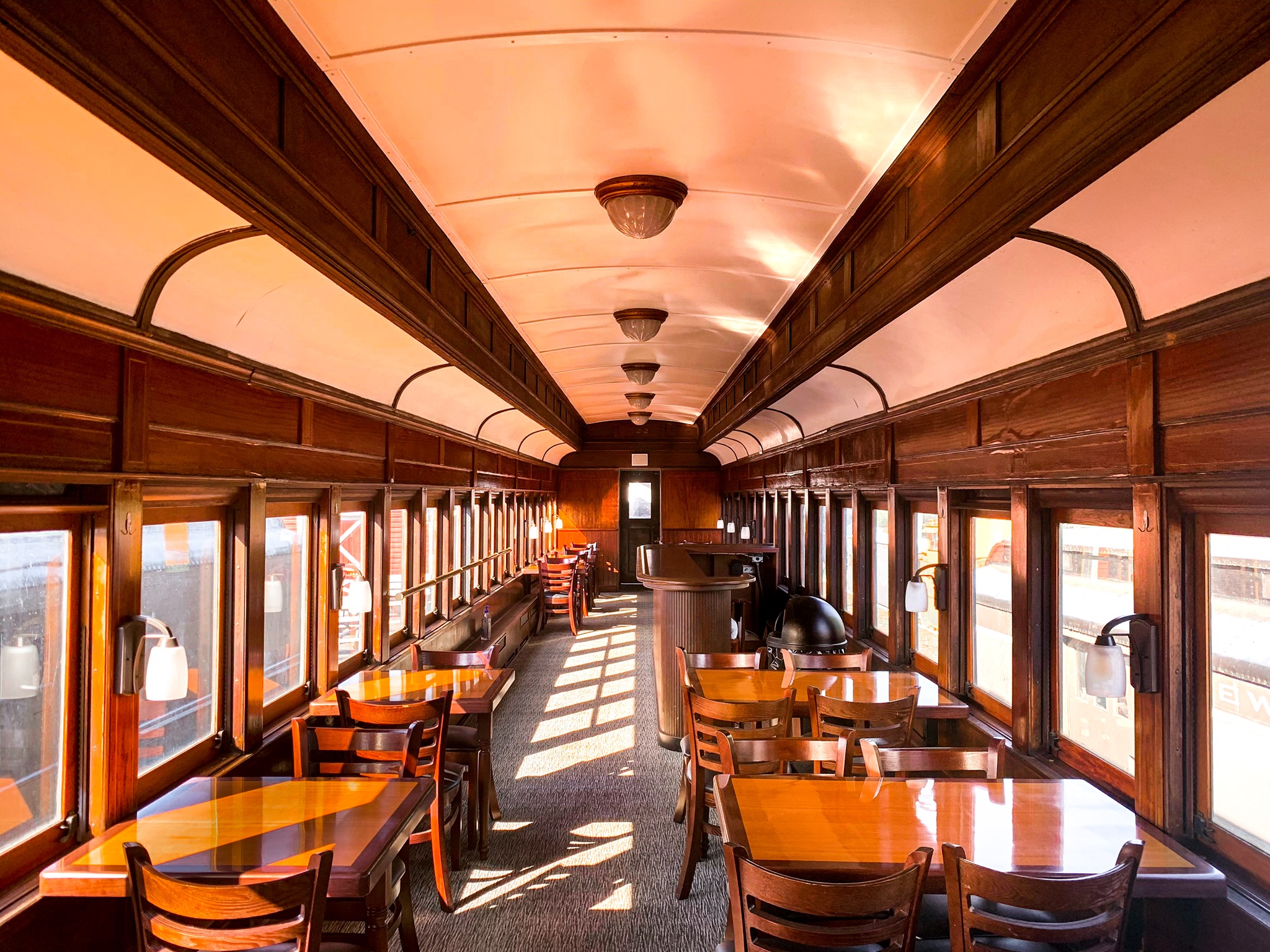Locomotives
Steam Locomotive 2-8-0 #60
Steam locomotive number 60 was constructed in 1937 by the American Locomotive Company (ALCo) in Schenectady, NY. It is known as a “2-8-0” or “Consolidation” type locomotive. It was built for the Great Western Railroad (GW) in Loveland, Colorado to primarily haul sugar beets. Despite being the newest and last steam locomotive purchased by the GW, it was only used occasionally.
In the late 1950’s, number 60 was retired from the Great Western and purchased by the Black River & Western Railroad. It was put into tourist passenger service in 1965, and quickly became the face of the railroad. Since then, the locomotive has been in service between Lambertville and Three Bridges, with several off-line trips as well.
In late 2000, number 60 was removed from service in need of a mandated inspection. Work included stripping all appliances, jacketing, and piping off the boiler, removal of all the tubes and flues inside the boiler, and a thorough inspection of the boiler itself. This included ultrasonic readings to test the boiler thickness and ensure it was safe to operate under pressure. Once this was completed, new tubes/flues were installed inside the boiler, and everything on the exterior of the boiler was reinstalled. The locomotive was reintroduced to service in 2012.
In late 2023, number 60 was once again removed from service to undergo the same mandated inspection, which is required by the Federal Railroad Administration. Inspection work is underway, and crews are working diligently to ensure it returns to service within a reasonable timeframe.
Diesel Locomotive SW9 #438
Diesel-electric locomotive number 438 was built by Electro-Motive Diesel (EMD) in 1952 for the Erie Railroad. It is a SW9 type locomotive, produces 900 horsepower, and was built for switching railroad yards. Throughout its life, it has worked for several different railroads, including Erie-Lackawanna, Conrail, and NJ TRANSIT. It was donated to the Black River Railroad Historic Trust in 2014.
Thanks to a generous grant from the Emery Rail Heritage Trust in 2018, number 438 received a layover heater, which allows it to operate year-round. Today, it is used for switching duties and provides diesel power for non-steam-powered excursions. Read more about the restoration here.
Rolling Stock
COMBINATION CAR #297
Combination car, or “Combine” number 297 was built in 1923 by the American Car & Foundry Company for the Central Railroad Company of New Jersey, or Jersey Central. This car consisted of two compartments, approximately two-thirds was set up as a standard coach with capacity for 51 people, and the remaining third was set up as a baggage compartment. For the first forty years of its life, this car saw extensive service on the Jersey Central’s commuter and intercity trains throughout New Jersey and eastern Pennsylvania.
In 1967, this car was retired from the Jersey Central and purchased by the Black River & Western Railroad. Numbered both 297 and 320 at various times, this car has been in service between Lambertville and Three Bridges ever since. It retains it’s combination passenger and baggage set up to this day, and can be found on most trains operated by the Black River Railroad Historical Trust.
COACH #1009
Coach number 1009 was built in 1923 by the American Car & Foundry Company for the Central Railroad Company of New Jersey, or Jersey Central. This car was configured as a coach with a capacity of 78 people, and it saw extensive service on Jersey Central’s commuter and intercity trains throughout New Jersey and eastern Pennsylvania.
In 1976, this car was retired from the Jersey Central and purchased by the Steamtown Foundation in Bellows Falls, VT. From 1976 on, it saw minimal use but moved to Scranton, PA, when Steamtown relocated in the 1980s. In the 2000s, the Black River Railroad Historical Trust negotiated the purchase of this car from Steamtown, which arrived in Ringoes in 2010. After an extensive restoration, the car entered service in 2015 on the Black River Railroad Historical Trust’s trains.
In 2022, the Black River Railroad Historical Trust received a generous grant from the Emery Rail Heritage Trust to conduct major “life extension” work on mechanical components. This included installing new wheels and springs and rebuilding the running components overall to ensure the car continued to operate long into the future. Read more about the restoration here.
COACH #605
Coach number 605 was built in 1914 by the Pullman Company for the Delaware, Lackawanna & Western Railroad, or Lackawanna. This car was configured as a coach with capacity for 78 people, and saw extensive service on the Lackawanna’s non-electrified commuter routes in New Jersey.
In 1972, the now merged Erie-Lackawanna retired this car, and the Black River & Western Railroad purchased the car. Until the late 1990s, this car was regularly in service between Lambertville and Three Bridges on the Black River & Western trains, but was sidelined in the late 1990s when it was in need of a significant overhaul.
In 2015, the Black River Railroad Historical Trust began to undertake major restoration work on this car, and reintroduced the car to service in late 2018. Work undertaken included a complete restoration of the interior and refurbishment of the exterior and mechanical components to make the car operational. It can be found on most trains operated by the Black River Railroad Historical Trust.
CLUB CAR #322
Club Car number 322 was built in 1927 by the Bethlehem Shipbuilding Company for the Central Railroad Company of New Jersey, or Jersey Central. This car was configured as a coach with a capacity of 78 people, and it saw extensive service on Jersey Central’s commuter and intercity trains throughout New Jersey and eastern Pennsylvania.
In 1967, this car was retired from the Jersey Central and purchased by the Black River & Western Railroad. This car was used in filming the movie “Funny Girl” during its last days on Jersey Central, and as a result, half the seats were removed for the camera crew and equipment. The Black River & Western renovated the car into a Club Car, replacing the seats with tables and installing a bar in the center of the car. The car was named the John L. Bishop after the president of the railroad at that time.
This car remains in service on the Black River & Western Railroad. It can be found on the train during Christmas and Easter seasons, as well as during special events. The car is also available to be rented out for larger groups on most departures and can be used for birthdays, weddings, and other occasions. The club car configuration has a seating capacity of 36 passengers. Click here for more information about renting out our exclusive Parlor Car!
CABOOSE #C-140
Caboose number C-140 was built by the Erie Railroad in its Dunmore, PA, car shops in 1941. It was one of an initial group of 70 identical cabooses that featured all-steel riveted construction and a distinctive off-center cupola that became its trademark. These so-called “Dunmore” cabooses were immediately put to work in fast freight service throughout the Erie Railroad system, where they served as the “home away from home” of freight crews. On October 17, 1960, Erie C140 became Erie-Lackawanna C140, as the Erie merged with its old rival, the Lackawanna, and on April 1, 1976, C140 again went to work for a new railroad, this time Conrail.
By the 1980s, the iconic American railroad caboose was fading into history due to advances in railroad technology, and C140, by then re-numbered Conrail 46106 and demoted to work train service in Mingo Jct, Ohio, was withdrawn from duty and sent to Conrail’s car shop in Reading, PA for disposition. There, a BRW railroader discovered it, purchased it in 1987, and shipped it to Ringoes, NJ, where it was lovingly restored by BRW staff into its original Erie Railroad colors. It became the unofficial “crew car” of BRW volunteers and was used on regular passenger and excursion trains and occasional freight service.
In 2014, the car was donated to the Black River Historic Trust and painstakingly restored again, this time by BRRHT volunteers. Today, the caboose is available for charter trips, giving passengers a chance to relive the bygone days of American railroading, when every freight train had a little red caboose bringing up the rear. Click here for more information about renting out the little red caboose!

